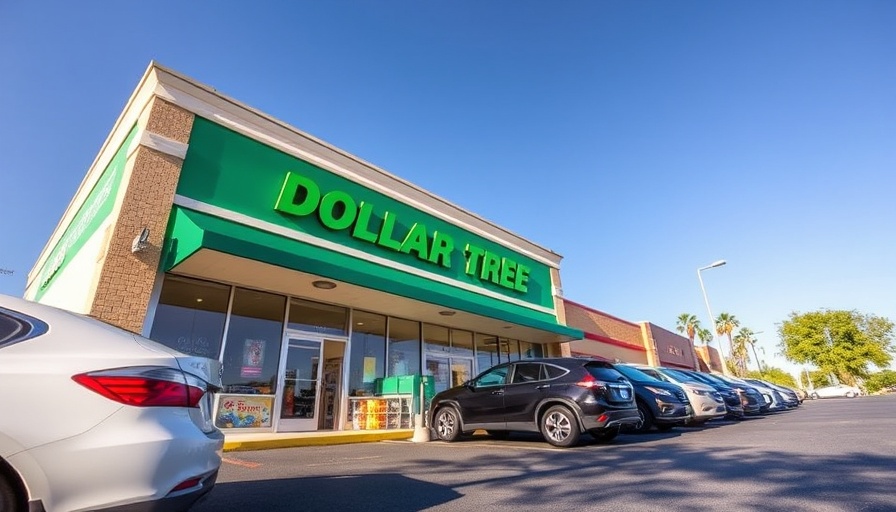
Dollar Tree's Strategic Shift Amid Inflation
In an intriguing turn of events, Dollar Tree has announced that it's successfully attracting higher-income shoppers, a trend that reflects a broader value-seeking behavior across a wide swath of consumers. This comes during a time when many households feel the pinch of sustained inflation, driving them to seek the best deals. Michael Creedon, the CEO of Dollar Tree, noted that while its traditional bases were lower-income shoppers, approximately 50% of the company’s business now stems from middle-income consumers, revealing a shift in their customer demographic.
Inflation and Consumer Behavior
The ongoing inflation crisis is reshaping retail consumption habits. Major players like Dollar Tree and Walmart are reporting significant increases in business from higher-income shoppers, who are looking for deals across all income brackets. This change presents a valuable opportunity for Dollar Tree to not only increase its market share but also to adapt its pricing strategies.
Facing Tariffs Head-On
With President Trump's tariffs on goods from trading partners like China, Mexico, and Canada, Dollar Tree is also considering price hikes. While this might concern budget-conscious customers, Creedon explained the company's strategy to negotiate with suppliers and shift manufacturing processes to mitigate these costs. In fact, about 2,900 of its locations are now priced above the standard $1.25, with some items ranging between $1.50 and $7.
Continued Adaptation in Retail
Despite all these challenges, Dollar Tree's adaptability is commendable. As they prepare to sell their struggling Family Dollar chain, the focus is on reshaping their business model to serve an increasingly diverse customer base. This reshaping serves as a reminder of how crucial it is for retailers to stay adaptable amidst the changing economic landscape. Moreover, as customers adjust their buying habits, stores that prioritize providing value will likely thrive.
Looking Ahead
In a world where financial sensibilities are more pronounced than ever, understanding the preferences of higher-income customers can drive retail success. Dollar Tree's pivot shows that it’s not just about affordability anymore; it’s also about providing perceived value. As businesses align with consumer sentiments, building relationships through value propositions could define the future of retail.
As business leaders and managers, it’s vital to stay ahead of these trends and consider how your own strategies can adapt to changing consumer preferences. It's a lesson in agility for all in the retail sector.
 Add Row
Add Row  Add
Add 










 Add Row
Add Row  Add
Add 

Write A Comment